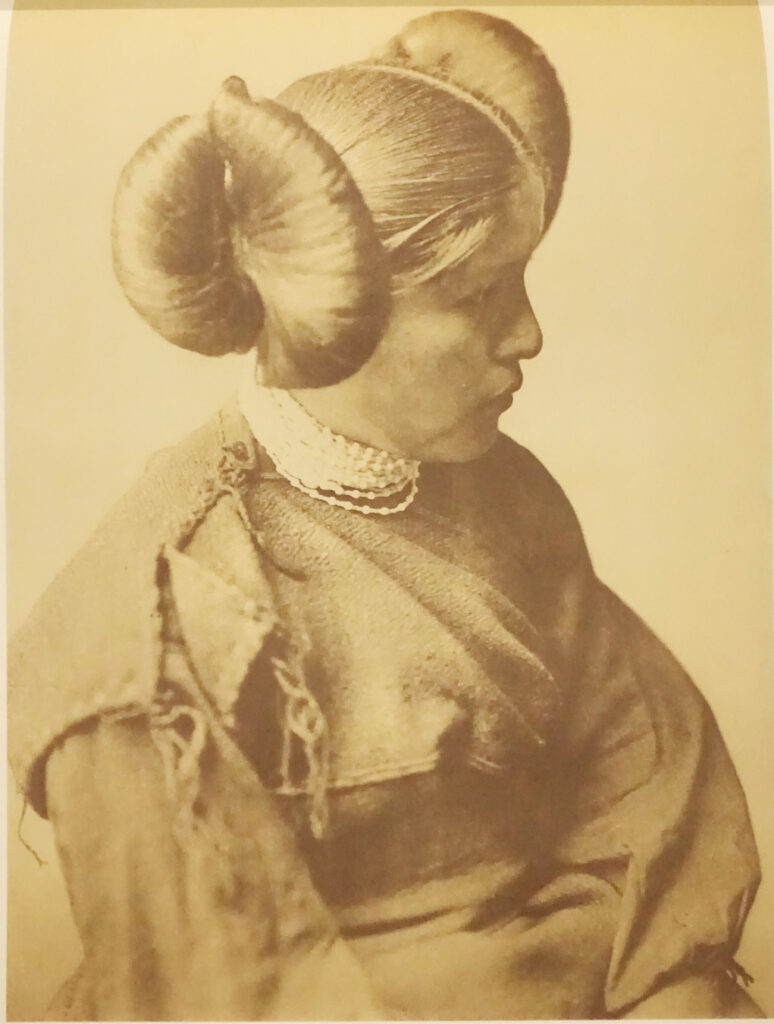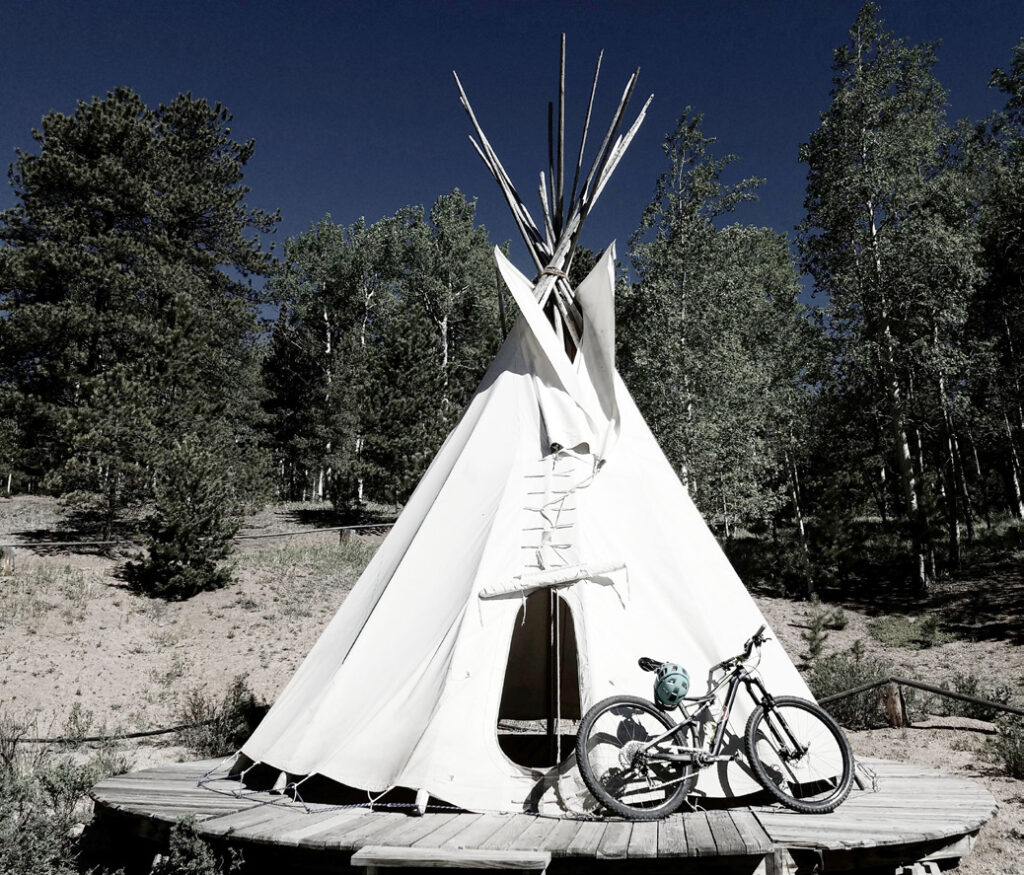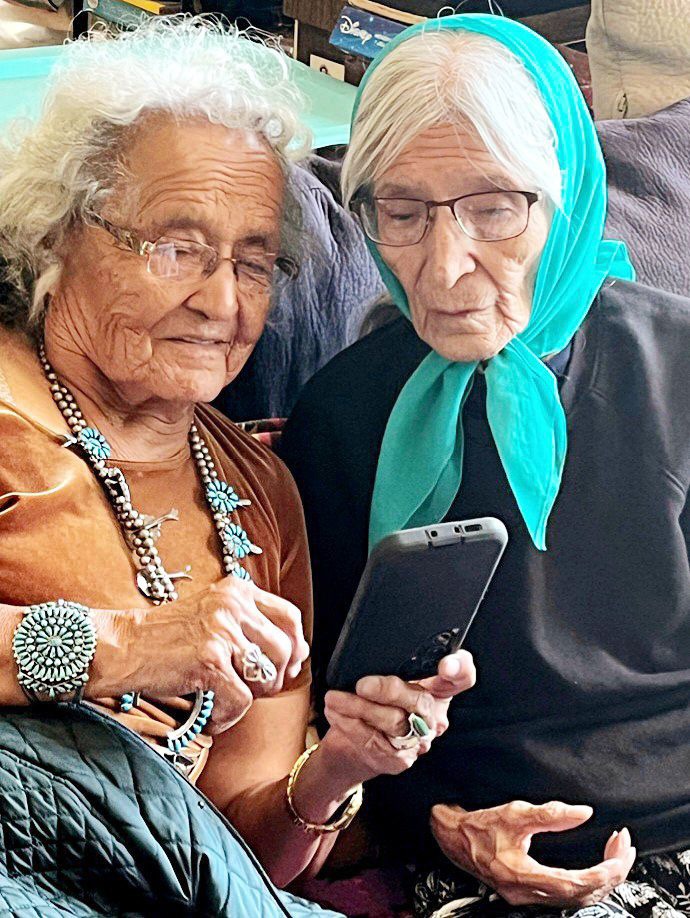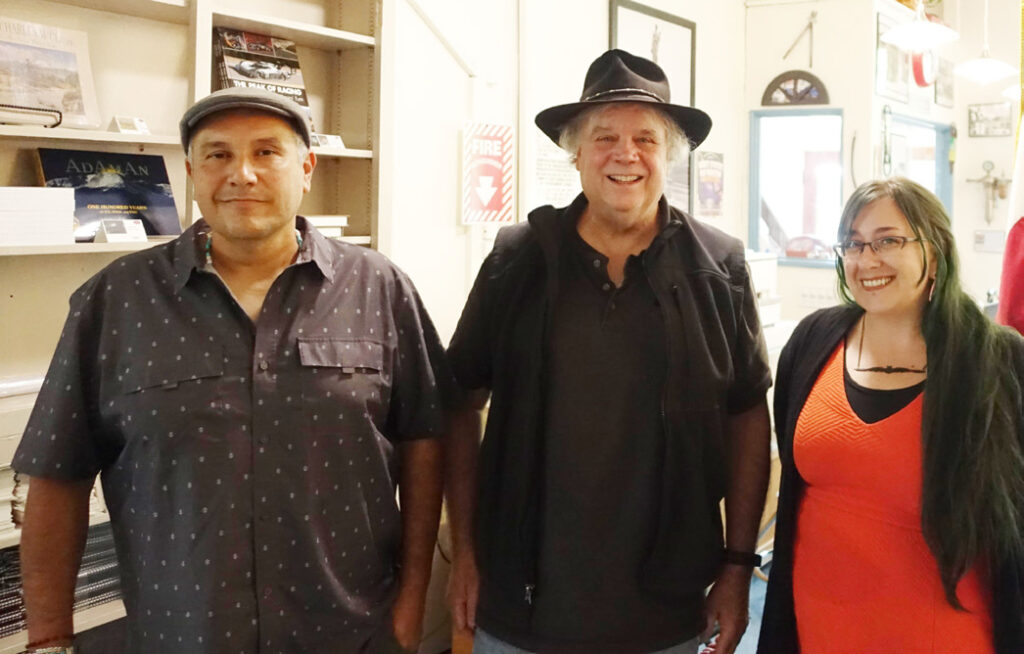Eleven years ago, Manuel Pulido moved from Texas to Manitou Springs. As a sculptor and muralist with Apache roots, he had taught as a college art professor. Coming to Colorado, he brought with him his culture and his craft, expressing his heritage through his art.
For Pulido, whenever moving to a new land, it was tradition to acknowledge its original inhabitants, which included, among others, the Ute, Cheyenne and Kiowa tribes. In that spirit, he and his wife Natalia gathered pigments and sands from native sacred sites including Tavá (the name Ute people gave what was later called Pikes Peak) and used them in a mural depicting the Manitou creation story.
In the mural the Creator blows air into the water, referencing the town’s carbonated mineral springs, a Native person offers up beads to accept the water, and the hummingbird flies, its flutter forming the stars.
“While we were painting this mural, we also realized a lot of people that were here were needing healing themselves,” he said.
Pulido saw some of these wounds in people who were not as open-minded as they claimed to be. He would hear the disrespectful remarks they made about Indigenous people, and the negative attitudes they would express about them. He even met some who didn’t know that Natives still existed.
To that end, he incorporated a hidden white buffalo into the mural, a sacred symbol offering its healing to those who see it. Healing is what Pulido strives for in his work.
Pulido also helped establish the Sacred Tree Council, a local organization of Indigenous people. It was created to give a voice to the local Indigenous population, foster communication between the city and the tribes, and protect against those pretending to speak for Native interests.
“We’re that conduit in the middle that helps feather out any of those issues,” he explained.

Michael Maio grew up in Cincinnati, Ohio and moved to Manitou Springs in 2005. He worked as a real estate and title attorney, running a title insurance company in Ohio. Back in the nineties, Maio began visiting Native reservations in the Four Corners region. He met members from various tribes including the Hopi and Zuni, learned about their traditions and religions, sharing conversations and meals along the way. Through these trips, Maio developed a connection with Indigenous peoples. After moving to Colorado, he began volunteering with the Manitou Springs Heritage Center and Museum and currently serves as board president.
When Maio approached Pulido and the Sacred Tree Council about putting on an Indigenous people’s photo exhibit at the museum to include the works of photographers Edward S. Curtis and Roland Reed alongside those of contemporary Indigenous photographers, he knew it was a risky proposition.
As white American photographers in the late 19th and early 20th century, Curtis and Reed became famous for their images of Native peoples, but their work, including the fortune they garnered posthumously, did not trickle down to its subjects. For example, Curtis’ most significant work was “The North American Indian,” a 20-volume photographic study of over 100 tribes with only a few hundred copies published. However, many of these collections ended up in the hands of private collectors, some of whom made large profits tearing out and selling individual prints from the books.
Hence, many Natives saw them as another historical example of the exploitation and misappropriation of Indigenous people and their cultures. In addition to many being forced from their ancestral lands, they were often forbidden even from practicing their religions, speaking their languages, or keeping their own names.
In addition, many of Curtis’ and Reed’s images of Native practices were staged, reflecting the technological limitations of their cameras, which required subjects to be still for longer periods of time. According to Pulido, one must evaluate each image to determine whether it depicts an actual tradition and whether the tradition would have been open to the public. In his evaluation, Curtis’ and Reed’s work generally meets these criteria.
At the same time, their work has become important because many Natives had more oral traditions than written – traditions that were disrupted by colonization. The images have provided insight into Native history that otherwise may have been lost. Pulido mentioned that in one such photo, he found documentation of sacred traditions that are no longer practiced.
“We’re celebrating that we got the photographs, that there’s still some history there that we can learn from and that we have learned from,” he said. “There’s still some traditions that have been saved because of these photographs.”
On one of his reservation visits, Maio recalled being invited by a Hopi woman into her home where he recognized a Curtis print hanging on the wall depicting a young Hopi girl.
“Are you collecting Curtises?” he asked.
“No, that’s my grandmother,” she replied, adding that she had learned the art of making pottery from her.

Through photographs of his own Lipan Apache tribe, Pulido discovered how his great-grandfather was cousins with the chief. His late friend and fellow artist, Kenny Frost, was also able to find out his great-grandfather was the Ute Chief Nanice.
“We’re not really highlighting the fact of misappropriation. It happened; we accept it. But we’re highlighting the fact that there’s more medicine there than just … the bad things,” Pulido said. “There’s also some good things and we’re trying to highlight the fact that our traditions or cultures might have been part of these photographs.”
Another goal of the exhibit is to educate about Native cultures in a positive light.
“By bringing communities together for this exhibit, we’re creating a unified community. We’re creating a sense of positivity, and I think we’re hoping to affect people’s perceptions,” said Maio.
To that end, the exhibit will also feature the photography of Native photographers Amanda Jones, Frost, Pulido and Larry Cesspooch. Some of the images will depict the melding of traditional Native cultures with modern society.
According to Maio, by incorporating contemporary artists the exhibit hopes to capture how Native cultures have mixed modern lifestyles with their traditions.
Despite the historical baggage, Pulido has supported the efforts because he sees an opportunity for the greater public to engage with Native cultures in an open and honest way, and in doing so, hopes to turn a negative into a positive.
“That idea is what we call the flow of the river … it’s flowing one way; let’s figure out how to make it flow the other way,” said Pulido.

K8e Orr (pronounced “Kate”), is also a member of the Sacred Tree Council and is from Manitou Springs. Growing up, she recalled participating in cultural shows at the Garden of the Gods. She also recognized the pain of bringing up the past but also the opportunity that comes with it.
“[What is] important about the show is that in the past we have it through their eyes,” she said. “We now have this huge moment to reclaim our own stories and storytelling styles, and by being able to show it through modern day photographers, we’re proving that we are still here … still creating art, still creating storytelling and I think that when we get to capture it through our own eyes and vision, we are capturing so much thickness of our heritage.”
For Maio, the exhibit and the weekend’s festivities offer another opportunity.
“There seems to be this missing gap in our history here in the Pikes Peak Region, which is covered by the [Native] people. We’re trying to reintroduce that history back into mainstream history … to reintroduce Native cultures back into the history of our town’s history,” he said.
The photo exhibit will debut 5p.m. on Oct. 12 to kick off the Manitou Springs Indigenous Peoples Weekend and run through May 1 at the Manitou Springs Heritage Center and Museum. Larry Cesspooch will conduct a blessing of the exhibit. The exhibit will also include narratives and biographies for each of the contemporary photographers along with a small collection of Native kachinas, fetishes and pottery, accompanied by general descriptions.
On Oct. 13, there will be a Grandmother Ceremony and hike beginning at Mansions Park and ending at Higginbotham Flats. It will be conducted as a traditional ceremony, open to all, and led by Indigenous grandmothers coming from as far as South America. Pulido will be sculpting a commemorative cairn to mark the occasion.
Cairns were traditionally built to inform outsiders about the community inhabiting the area. According to Pulido, it might indicate whether it was a hunting tribe, whether water was present, or whether visitors were welcome.
Pulido’s cairn will feature a condor, symbolizing South and Central America Indigenous peoples and an eagle, representing North American Indigenous peoples. Together, he said, it will highlight Manitou as a friendly and welcoming community.

Following the ceremony, there will be a community potluck, storytelling from Ute spiritual leader, filmmaker and photographer Larry Cesspooch, and a ceremonial renaming of the Gog and Magog rock formations that sit a couple thousand feet above Manitou Springs.
According to Pulido, Gog and Magog were the names given by European settlers, replacing the formations’ Indigenous names and referring to violent descendants of Noah in the Bible who were enemies of God. The new name will be “Bear Brothers,” a reference to a Native story about two brothers who were hunting for elk when they encountered a female bear. Through her songs, the brothers were introduced to the balance between masculine and feminine characteristics.
For Pulido and Maio, the Indigenous Peoples’ Weekend is about coming together as an Indigenous and non-Indigenous community to address the wounds of the past. Like Pulido’s work, it’s about acknowledging the past, building bridges by sharing stories, and taking small steps forward together into the future.
“That’s the kind of healing I’m after now,” said Pulido.
For additional information about the weekend’s events, check out ManitouSpringsCo.gov/805/Indigenous-Peoples-Weekend.

